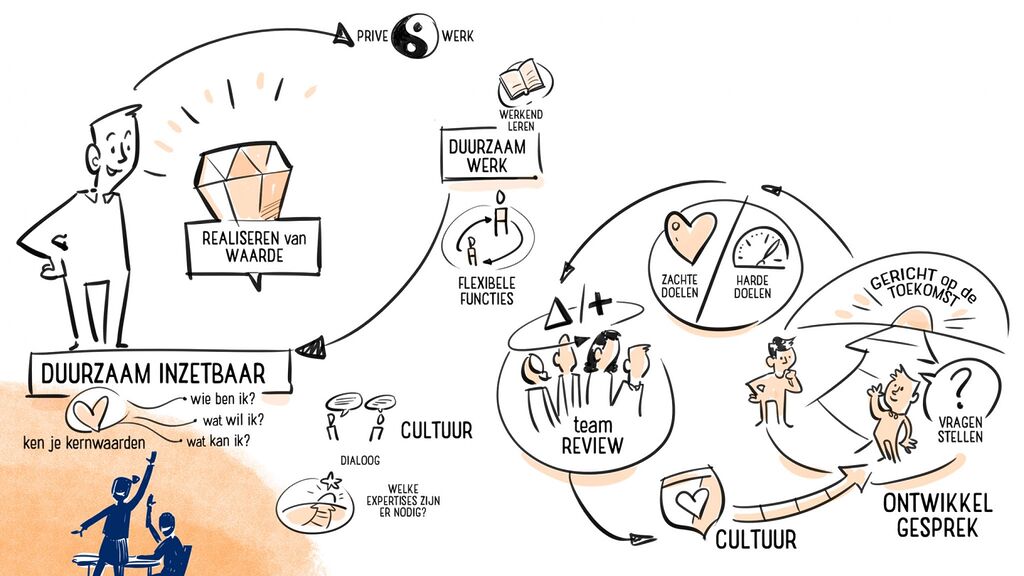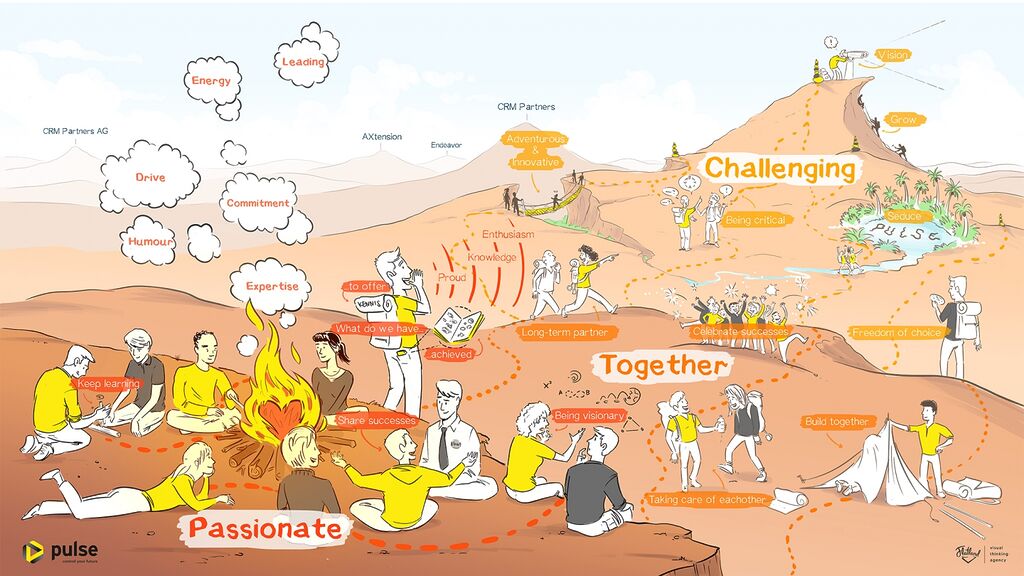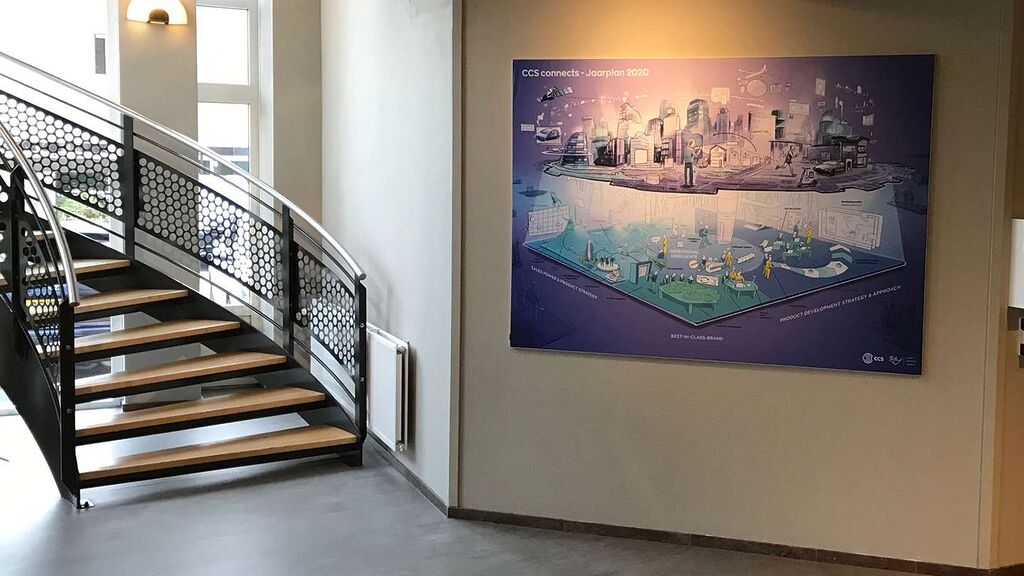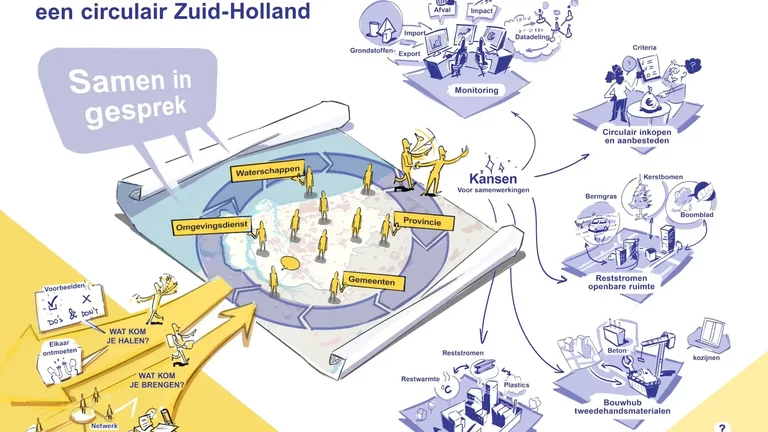Onboarding: well begun is half done
By properly landing new employees in the organisation, they are more productive faster, feel more engaged and are less likely to leave.New people are quite an investment. It takes them a while to get up to full speed. So your goal is to make sure the employee feels at home in the organisation as quickly as possible and can therefore contribute more quickly. And feeling at home means that the person needs to know, understand and share your vision, mission and values.
If onboarding is well organised, new employees will fall in love with their jobs. And your organisation naturally needs employees who are fully engaged; they are passionate about their work and feel a strong connection with their company’s culture and values. In short, starting a new employee should not be something you just let happen to you, but make sure you have thought about it proactively.

Tips for a successful onboarding process
It is important for the new employee to learn all kinds of different things. What is the role of the new employee?What are the basic rules that everyone should follow? What is the organisational culture? We use these four pillars for an effective onboarding process: Purpose – Autonomy – Mastery – Belonging. Properly applied, it ensures the complete integration of new employees into the organisation.
The new employee…
- is familiar with the strategy, can explain it and understands their own role in it(purpose).
- understands its own role, tasks and responsibilities. Plus the relationship with colleagues, and what remains to be developed to fully assume the role(autonomy).
- can apply the basics of our way of working independently and is familiar and comfortable with all systems and tools(mastery).
- sees himself as part of the team, gives and receives feedback, dares to take initiative(belonging).

Make mission, vision and core values visible together
Just naming a few core values is obviously not enough. Do your values actually still match your daily practice and your strategy? In that sense, an onboarding process is also a valuable check for yourself: is it actually true what we promise? And can we explain it clearly? If you discuss and record the strategy and core values with each other, and test them regularly, this provides more clarity for everyone and results in faster trust – and action! – faster.

Our idea? Make your story concrete and visual, hang it large and visible – preferably in a place that everyone sees. This ensures that it belongs to everyone and is carried. But the creation is still the most worthwhile. We don’t think it works to forward a list of five core values and absolutely believe in co-creation.
That is why we organise sessions with all employees and together ensure that the sometimes abstract terms really come to life. A teacher at a school we co-developed an education plan with told us, “Seeing that hanging in the corridor every day reminds me that this is what we really stand for as a school. It also makes me proud, because we came up with this together as a team and this is really ours!”

Conversation tools and games
Thanks to tools and games, core values become part of your working week. Games have great activation power. We always ensure a lot of interaction in our sessions by using many different work forms. Fitting to an organisation and its needs, we develop a set of maps, for instance, showing issues that play a role in your environment. Or an interactive roadmap, in which employees can plot their own development. And say it yourself, everyone wants to play a bingo card like that!

Andne... how does Flatland actually do this itself?
We ourselves have grown considerably in recent years and discovered how valuable a good onboarding process is. Recently, colleague Rob van Barneveld joined us, below you can see an illustration of his first week. He used this drawing to reflect with the team. And Flatland wouldn’t be Flatland if we didn’t make it all visual.
An induction period is intensive, both for the new employee and colleagues involved. So we also build in a lot of time for reflection and coffee with colleagues from the same team or role. We work with a mentor (someone with a lot of experience in the same role) and a buddy (someone from another team, for light-hearted and social conversations). And the bingo card comes along regularly, with which we playfully inspire new people to take initiative.

We are working hard on it, but our onboarding is definitely not perfect yet. So we are always looking for improvements. Of course, we’d love to do the same for you. Come and brainstorm? Don’t hesitate to get in touch.
Want to exchange ideas? Send Willem a message.
Managing partner Willem Minderhoud is an experienced visual consultant and responsible for HR at Flatland.
ContactManaging Partner




